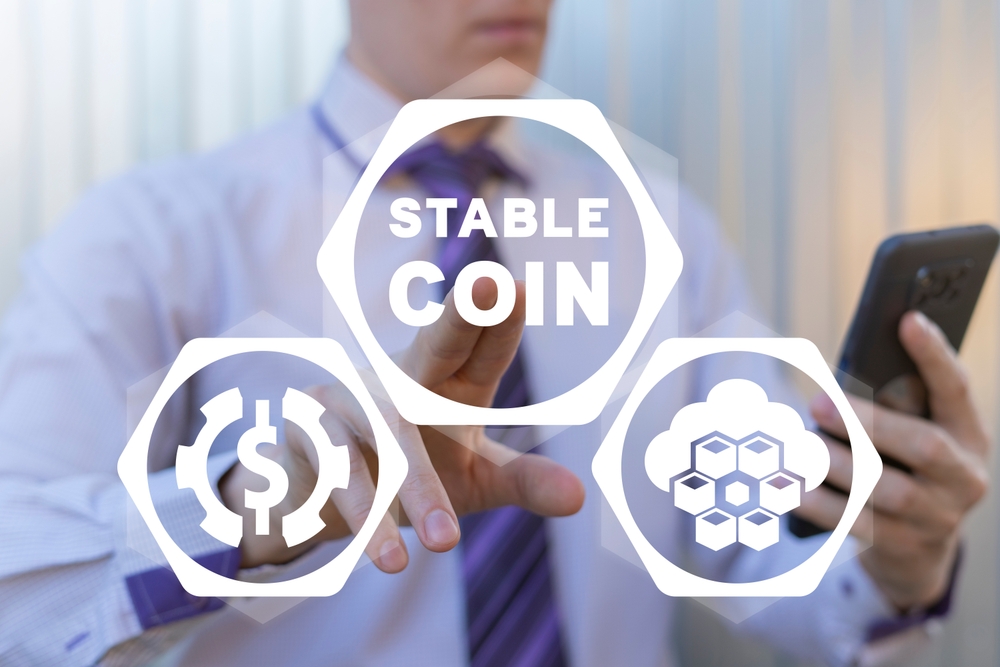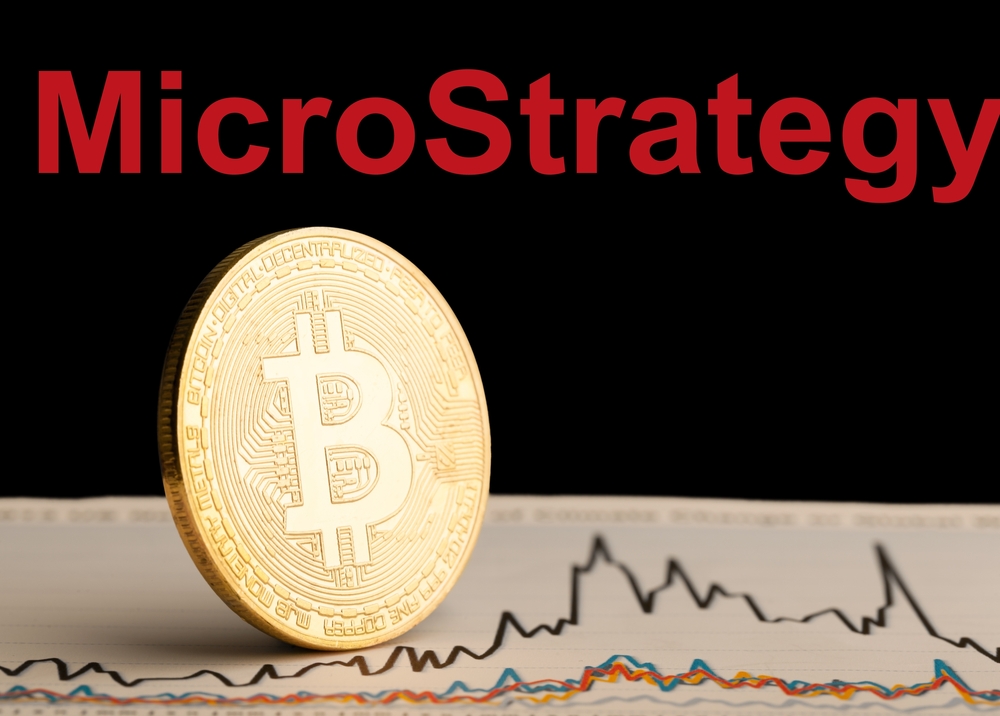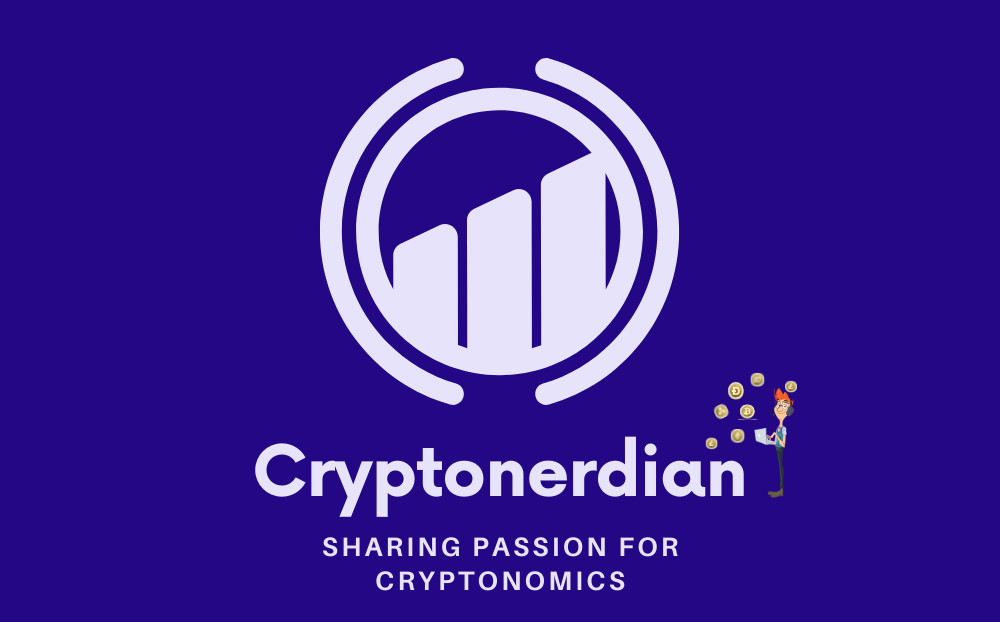The landscape of blockchain technology is continuously evolving, showcasing diverse solutions that address different challenges within the decentralized ecosystem. Among the innovative strides are Cardano, Arbitrum, and Mina Protocol—each offering unique approaches to scalability, security, and efficiency. Cardano is lauded for its scientific philosophy and layered architecture, aiming to provide a more sustainable and balanced platform for the development of decentralized applications. Conversely, Arbitrum operates atop the Ethereum network, employing off-chain solutions to enhance transaction speed without compromising Ethereum’s security. Mina Protocol introduces a novel twist with its succinct blockchain, drastically reducing data requirements and enabling participants to quickly sync and verify the network.

These platforms, though distinct in their mechanisms, are interconnected by their common goal of pushing blockchain forward while ensuring user-friendliness and inclusivity within the ecosystem. Cardano’s third-generation blockchain status presents a futuristic outlook on governance and development, pursuing a more democratic and versatile infrastructure. Arbitrum rides the second layer wave, focused on amplifying Ethereum’s reach without altering its foundational chain, making it an essential player in the realm of smart contract scalability. Lastly, Mina Protocol redefines minimalism in blockchain size, facilitating widespread accessibility and potentially transforming how users interact with blockchain applications. Together, they exemplify the variegated fabric of blockchain innovation, yet their paths differ in the march towards widespread adoption and technological refinement.
Table of Contents
ToggleKey Takeaways
- Cardano, Arbitrum, and Mina Protocol contribute distinct solutions to scalability, security, and efficiency in the blockchain sphere.
- Layered architecture, off-chain solutions, and succinct blockchains demonstrate their unique approaches within the decentralized ecosystem.
- These platforms continue to shape the future of blockchain technology through development, governance, and user adoption strategies.
Understanding Blockchain Technology

Blockchain technology serves as the backbone of modern digital currencies like Bitcoin and Ethereum, demonstrating revolutionary use cases beyond just financial transactions. It represents a seismic shift in how data is handled, offering decentralized control, increased security, and reduced opportunities for fraud.
Principles of Distributed Ledgers
A distributed ledger is the core concept behind blockchain technology. Unlike traditional databases managed by a central authority, a distributed ledger is held and updated independently by each participant (node) in a large network. The key characteristics include:
- Decentralization: No single entity has control over the entire network, providing a democratic approach to data management.
- Transparency: All transactions are visible to every participant, fostering a high level of trust and verifiability.
- Immutability: Once recorded, the data cannot be altered retroactively without altering all subsequent blocks and the collusion of the network majority.
Evolution of Blockchain Networks
The evolution of blockchain networks is a tale of continuous innovation. Bitcoin introduced the world to decentralized digital currency, laying the groundwork for further development in the field. Ethereum expanded this concept through smart contracts, allowing for programmable transactions and applications that operate autonomously on the blockchain.
Blockchain networks have morphed to cater to diverse applications, with entities like Cardano proposing more scalable and energy-efficient alternatives, while the Arbitrum Virtual Machine aims to make Ethereum transactions faster and cheaper. The Mina Protocol, often cited as the “succinct blockchain,” dramatically reduces the data requirements, making participation more accessible. These platforms illustrate the dynamic, ever-evolving blockchain landscape, hinting at a future where technology’s potential extends well into various industries.
Cardano: The Third Generation Blockchain

Cardano emerges as a third-generation blockchain, enhancing what Bitcoin and Ethereum pioneered with a foundation rooted in scientific rigor and a focus on scalability, sustainability, and interoperability.
Cardano’s Scientific Philosophy
Cardano sets itself apart through its commitment to a scientific and research-first approach. Pioneered by Charles Hoskinson, one of the co-founders of Ethereum, Cardano’s development is grounded in peer-reviewed research, ensuring robustness and a contribution to the wider understanding of blockchain technologies. It introduces a unique layered architecture to enhance security and allows for more effective maintenance and upgrades.
Proof-of-Stake and Scalability
In addressing scalability, Cardano adopts the proof-of-stake (PoS) consensus mechanism with its protocol, Ouroboros. Unlike proof-of-work (PoW) systems, which require vast amounts of energy, Ouroboros is designed to be much more energy-efficient, thereby positioning Cardano as a greener alternative in the cryptocurrency market. This also contributes to higher transaction throughput and lower fees on the network.
ADA Tokenomics and Staking
The native cryptocurrency of Cardano is ADA, which holds a prominent place in terms of market capitalization. ADA’s design integrates staking, allowing holders to participate in the network’s PoS consensus process. This not only secures the network but also provides a way for ADA holders to earn rewards. With plans on the horizon for further development stages such as Voltaire, Cardano looks to an inclusive financial future with governance and self-sustainability at its core.
Arbitrum: Scaling Ethereum

Arbitrum serves as a trailblazing solution for Ethereum’s well-documented congestion and scalability issues, offering a faster and more cost-effective avenue for transactions without compromising on security.
Layer-2 Solutions and Scalability
Arbitrum stands out as a layer-2 scaling solution, working on top of the Ethereum blockchain. In essence, it aims to enhance Ethereum’s capacity to handle a greater volume of transactions, thereby reducing the network’s congestion and the associated transaction fees. By leveraging optimistic rollup technology, Arbitrum rolls up multiple transactions into a single batch, effectively multiplying the throughput of the Ethereum mainnet. This can significantly diminish bottlenecks during periods of high demand, maintaining the network’s performance.
- Scalability Gains: Transactions per second are greatly increased on Arbitrum compared to Ethereum mainnet.
- Fee Reduction: With transactions batched together, individual fees are considerably lower.
- Data Availability: Arbitrum benefits from Ethereum’s robust data availability layers while performing complex computations off-chain.
These scaling methods are crucial enablers, ensuring Ethereum’s relevance in an ever-evolving market, maintaining security and decentralization ideals.
Arbitrum’s Technology and Security
Arbitrum utilizes a unique blend of optimistic rollup technology and a decentralized security protocol to achieve its objectives.
- Technological Framework: Arbitrum’s protocol executes smart contracts off-chain while posting a commitment to transactions on the Ethereum blockchain, which allows for the smart contracts to scale with decreased direct load on Ethereum.
Arbitrum does this by assuming transactions are valid by default and only running computation, via a fraud proof, in the event of a challenge. This security mechanism is pivotal; it means that while users enjoy faster transactions and lower fees, they do not have to compromise on the trust and assurance they place in Ethereum.
- Security Assurance: Arbitrum’s protocol maintains a high level of security, benefiting from Ethereum’s robust security model. The only difference in transaction handling is the layer at which computations occur, providing an added layer of efficiency without forgoing the security that users expect from the Ethereum network.
Arbitrum’s advancements represent a significant milestone in the quest to make the Ethereum network more scalable and efficient. By mitigating issues related to high gas fees and sluggish transaction times through innovative layer-2 solutions like Arbitrum, Ethereum can continue to grow as a platform for decentralized applications.
Mina Protocol: The Lightweight Blockchain
Mina Protocol positions itself distinctively in the blockchain realm due to its constant, succinct blockchain size. Regardless of the number of transactions processed, Mina remains approximately 22KB, manifesting a leap forward in scalability and accessibility.
Using Zero-Knowledge Proofs
Mina Protocol leverages zero-knowledge proofs, specifically zk-SNARKs (Zero-Knowledge Succinct Non-Interactive Arguments of Knowledge), to compress transaction data without compromising security. Each user retains proof of the entire blockchain’s history while only needing to store a miniscule snapshot, thereby drastically reducing the individual data requirements and enhancing the potential for scalability.
Mina Protocol’s Ecosystem
The ecosystem of Mina Protocol is vibrant and burgeoning. It comprises developers, validators, and participants who are integral to its operation and the propagation of its zero knowledge layers. The technology underpinning Mina is designed for a scalable future, with the roadmap indicating plans for increased application utility through Snapps – applications powered by zk-SNARKs. This may result in Mina Protocol leading a new wave of lightweight, scalable blockchain platforms.
Comparative Analysis
In this comparative analysis, we focus on the distinct characteristics and future implications of Cardano, Ethereum, and layer-2 solutions like Arbitrum, emphasizing their scaling techniques and the innovative use of zero-knowledge proofs within blockchain networks.
Cardano vs. Ethereum
Cardano has positioned itself as a strong competitor to Ethereum by leveraging its Ouroboros proof-of-stake algorithm, which aims to offer a more energy-efficient and scalable alternative to Ethereum’s original proof-of-work mechanism. While Ethereum is transitioning towards proof-of-stake with Ethereum 2.0, Cardano has already established a foundation for lower transaction fees and reduced environmental impact.
- Cardano
- Consensus: Ouroboros Proof-of-Stake
- Focus: Sustainability and Interoperability
- Ethereum
- Consensus: Transitioning to Proof-of-Stake
- Focus: Smart Contract Dominance and Ecosystem Growth
Advantages of Layer-2 Solutions
Layer-2 solutions, such as Arbitrum, play a pivotal role in scaling Ethereum’s network by handling transactions off the main chain, allowing for increased transaction throughput without sacrificing security. By operating ‘on top’ of Ethereum, Arbitrum can scale the capabilities of Ethereum’s network, offering users lower fees and faster transaction times, all while benefitting from the security properties of the underlying blockchain.
- Key Benefits:
- Scalability: Enhanced transaction throughput
- Cost-Effectiveness: Reduced gas costs
- Security: Leverage Ethereum’s robust network
Potential of Zero-Knowledge Proofs
Zero-knowledge proofs, specifically ZK-SNARKs, represent a groundbreaking advancement in the realm of blockchain privacy and scalability. Protocols like Mina are pioneering this front by creating succinct blockchain networks through the use of zero-knowledge proofs. They can compress data into small proofs, known as SNARKs (Succinct Non-Interactive Arguments of Knowledge), which are quick to verify regardless of the amount of data processed.
- Use Cases:
- Privacy: Transactions remain verifiable without disclosing all transaction details.
- Scalability: Potential to reduce on-chain data and improve overall blockchain throughput.
In summary, each technology presents a unique approach to improving blockchain networks. Cardano’s proof-of-stake consensus paves the way for a sustainable ecosystem, Ethereum’s progression towards PoS and enhancement by layer-2 solutions like Arbitrum highlight a path to scalability and efficiency, and the potential of zero-knowledge layers like Mina Protocol introduces transformative privacy-preserving technologies that could redefine current blockchain capabilities.
Token Economy and Market Dynamics
In the convoluted world of cryptocurrencies, the token economy and market dynamics are propelled by factors like market capitalization, initial coin offerings (ICOs), and trends in investment. These elements drive the value and growth of projects like Cardano, Arbitrum, and Mina Protocol.
Market Capitalization and ICOs
The cryptocurrency market capitalization is a vital metric, representing the overall value of a cryptocurrency. Bitcoin, for instance, enjoys a dominant market cap often reflective of the broader market’s health. In contrast, newer entrants like Cardano’s ADA token, have witnessed their market cap surge following successful ICOs and growing adoption. Sites like CoinMarketCap serve as benchmarks to track these shifts.
Initial Coin Offerings (ICOs) are pivotal in raising funds for new projects. Mina Protocol, for example, leveraged an ICO to secure initial investments to support its succinct blockchain. The success of an ICO often indicates future market momentum and investor confidence for these tokens.
Investment Trends
Investment trends in the crypto sector tend to sway significantly based on multiple factors, including technological advancements and market speculation. Institutional investors like Grayscale have shown interest in diversifying portfolios with cryptocurrencies, bolstering market engagement. Meanwhile, influential individuals such as Barry Silbertalso impact market dynamics through public endorsements or critiques, indirectly affecting investor sentiment and trends.
Cryptocurrencies have attracted different types of investors, each with unique appetites for risk and return. While Bitcoinremains the staple investment for many, altcoins like ADA offer the potential for high returns, albeit with increased volatility. Over time, the influx of capital into cryptocurrencies from both retail and sophisticated investors has become a key driver of the token economy.
Development and Governance
In the realm of blockchain technologies, development and governance are pivotal for the advancement and sustainability of platforms such as Cardano, Arbitrum, and Mina Protocol. Each has unique approaches to roadmap progression and community governance, influenced heavily by their founders and contributors.
Roadmap and Updates
Cardano follows a carefully laid-out roadmap, with stages named Byron, Shelley, Goguen, Basho, and Voltaire. The advancement to Voltaire is particularly significant as it aims to introduce a fully decentralized voting and treasury system. Charles Hoskinson, Cardano’s founder, often shares these updates, emphasizing the platform’s methodical and peer-reviewed approach to development.
Arbitrum, known for its off-chain scaling solutions, does not have a public-facing roadmap in the traditional sense but iterates its platform based on community feedback and technological advancements. Through the development of its Arbitrum Virtual Machine, it promises enhanced scalability and efficiency, critical for future growth.
Mina Protocol, often highlighted for its compact blockchain size, pursues continuous enhancement of its succinct blockchain. Its updates are focused on maximizing efficiency and ensuring the protocol remains lightweight despite scaling efforts.
Community Involvement and Governance Models
Cardano’s governance structure is on its way to embodying the Voltaire phase, which will allow community members to directly influence the project’s future through a democratic voting process. This is a significant move toward a self-sustaining ecosystem, with ADA holders positioned as key decision-makers.
Arbitrum operates with a more centralized governance model, managed by its core team of developers and its parent company, Offchain Labs. However, its operations are subject to change as the platform evolves, and it may introduce more community governance mechanisms in the future.
Mina Protocol stands out with its succinct blockchain, allowing users to quickly sync and verify the network. They involve the community by encouraging them to become block producers or participate in snark-workers, contributing directly to the network’s efficiency and governance.
Through these models, each platform cultivates a unique relationship with its community and contributors, with a firm belief that in blockchain, the collective input of users is paramount for the system’s resilience and legitimacy.
Ecosystem and Partnerships
Cardano, Arbitrum, and Mina Protocol have invested significantly in their respective ecosystems, establishing strategic partnerships to drive adoption and spur innovation. Particularly, their focus extends to decentralized gaming, highlighting the growth of this sector as integral to their expansion strategies.
Strategic Alliances and Collaborations
Cardano’s ecosystem has steadily matured through key alliances, with EMURGO playing a pivotal role in fostering relationships that drive both adoption and technological integration. IOHK, another fundamental player in the Cardano ecosystem, delivers the technological framework necessary for robust and scalable partnerships.
Arbitrum, known for its Ethereum scaling solutions, has attracted various protocols wishing to leverage its layer 2 capabilities for increased transaction efficiency and reduced costs. These collaborations bring a broad spectrum of decentralized applications to the Arbitrum network, enhancing the platform’s value proposition.
Mina Protocol, with its succinct blockchain, presents a compelling proposition for partners interested in privacy-preserving computations. By collaborating with projects that prioritize data protection, Mina Protocol is expanding its ecosystem with a focus on security-conscious applications.
Fostering a Decentralized Gaming Sector
In the arena of decentralized gaming, Paima Studios has emerged as a significant collaborator, working closely with these blockchain platforms to develop on-chain gaming experiences.
Cardano has intensified its venture into the gaming sector by supporting developers through Project Catalyst, a community-driven funding initiative. This not only empowers lead developers but also incentivizes creative on-chain gaming projects.
Arbitrum benefits decentralized gaming by providing developers with a more efficient platform for deploying games, thereby reducing the barriers to entry for innovation in the gaming space.
Mina Protocol’s succinct blockchain structure offers games unique advantages in terms of data privacy and verifiability, which are essential for on-chain gaming integrity.
The developments in these ecosystems, facilitated by strategic partnerships, position them as formidable players in the blockchain industry, especially as they expand into the burgeoning decentralized gaming market.
User Adoption Strategies
To captivate users, Cardano, Arbitrum, and Mina Protocol focus on simplifying user interactions and energizing their communities. These efforts are critical for driving adoption and sustaining long-term growth.
Account Abstraction and User Experience
Cardano employs an account abstraction framework designed to reduce the friction for new users entering the ecosystem. By abstracting away complexities, users can manage their assets and interact with smart contracts more intuitively. For example, wallet interfaces hide intricate transaction details, presenting users with a clear and simple experience.
Arbitrum enhances user experiences by conceiving mechanisms that mask the technicalities of layer 2 solutions. This account abstraction extends to allowing users to initiate transactions in ways that feel familiar, thus shortening the learning curve and making the transition from traditional systems to blockchain seamless.
Community Growth and User Onboarding
Mina Protocol concentrates on growing its community through strategic user onboarding funnels. By using succinct, targeted tutorials and resources, Mina enlightens users about its succinct blockchain technology, facilitating a smoother onboarding process.
Cardano and Arbitrum place emphasis on community-building events and educational initiatives to drive user engagement. Their strategies include community meetups, hackathons, and user onboarding activities that educate users, while simultaneously fostering a sense of belonging and investment in the protocol’s success.
In their unique way, each platform acknowledges the power of a robust, informed community as an influential advocate for attracting new users and retaining them over time.
Looking Ahead
In the ever-evolving landscape of blockchain technology, Cardano, Arbitrum, and Mina Protocol stand as pioneers with significant potential for shaping a decentralized future. Addressing critical concerns such as scalability and smart contract functionality is at the core of their advancements.
Future Developments in Blockchain Tech
Cardano’s roadmap illustrates a commitment to a robust staking mechanism and scalable blockchain solutions. With its Ouroboros proof-of-stake algorithm, it sets the stage for increased transactions per second (TPS) and lower fees. They anticipate enhancing their technology with additional layers that could include side chains for improved scalability.
Arbitrum operates as a Layer 2 solution aiming to optimize Ethereum’s smart contracts. It is expected that Arbitrum’s ongoing enhancements will further reduce the costs and latency currently experienced on the Ethereum network. The focus will likely remain on the deployment of off-chain computation to allow for high-speed, low-cost transactions.
Mina Protocol offers a unique proposition with its succinct blockchain structure, where users are able to validate the chain with a fixed and small proof. This could lead to broader accessibility, making blockchain technology more practical for everyday use.
Vision for a Decentralized Future
Decentralization remains a guiding principle for these platforms. Cardano, with its goal to deliver a “third-generation blockchain,” aims to address issues of interoperability and sustainability. Through its continuous protocol upgrades, Cardano could pave the way for more flexible and user-driven governance in blockchain ecosystems.
The developers behind Arbitrum envision a network that facilitates a decentralized and secure environment for executing smart contracts. As scaling solutions evolve, they can potentially unlock new possibilities for dApp developers and users, fostering a richer decentralized application landscape.
Mina Protocol’s lightweight blockchain approach is aligned with a future where everyone can participate in the decentralized web without compromising performance. Its compact blockchain size is designed to ensure an inclusive participation model in blockchain-based services, regardless of one’s hardware constraints.
As they grow, Cardano, Arbitrum, and Mina Protocol may redefine what it means to operate in a truly decentralized world—a world where technology serves as an equalizer rather than a divider.
Frequently Asked Questions
In this section, we address commonly asked questions about Cardano, Arbitrum, and Mina Protocol, examining their unique characteristics and potential synergies.
What are the key features that differentiate Cardano from other blockchain platforms?
Cardano is distinguished by its scientific philosophy and the use of peer-reviewed research as the foundation for building its platform. It employs a unique proof of stake algorithm called Ouroboros, which emphasizes security, sustainability, and scalability.
How could Arbitrum’s Layer 2 solutions enhance Cardano’s scalability and efficiency?
Arbitrum’s Layer 2 solutions could theoretically enhance Cardano’s scalability and efficiency by offloading computation from the main blockchain onto a separate layer. This would allow for faster processing times and lower costs without compromising on security.
What are the potential use cases for Mina Protocol’s succinct blockchain in the Cardano ecosystem?
Mina Protocol’s succinct blockchain could enable lightweight, secure, and easily verifiable transactions within the Cardano ecosystem. Applications may include enhanced privacy for users and the facilitation of secure, decentralized applications that require minimal data storage and processing power.
What is the expected impact of Cardano’s Midnight sidechain on the platform’s privacy features?
The introduction of Cardano’s Midnight sidechain is expected to significantly enhance privacy on the platform. It aims to provide encrypted smart contracts and transactions, thereby allowing users to conduct business with a higher degree of confidentiality.
What innovations do Cardano-based games bring to the blockchain gaming industry?
Games built on Cardano may introduce novel features like verifiable fairness, improved asset security, and the ability to operate with lower transaction fees, thanks to Cardano’s efficient consensus mechanism. These innovations have the potential to attract more users seeking a reliable gaming experience on the blockchain.
How does the integration of stablecoins and DeFi on Cardano impact its future market outlook?
The integration of stablecoins and decentralized finance (DeFi) applications on Cardano has the potential to create a more robust financial ecosystem. Such integration can drive wider adoption and utility, as it may offer users stable mediums of exchange and innovative financial services, contributing to a positive future market outlook for Cardano.











